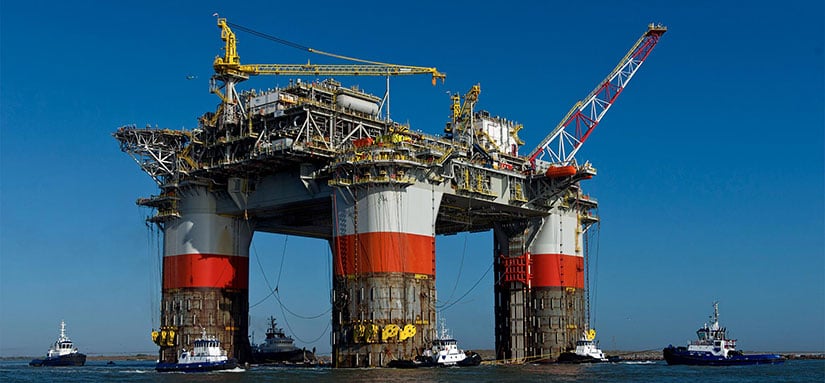 APP supplied custom wear pads designed to the dimensions required for special applications encountered during the build-out. The easy installation of APP wear pads meant Chevron met construction schedules and enjoyed reduced labor costs.
APP supplied custom wear pads designed to the dimensions required for special applications encountered during the build-out. The easy installation of APP wear pads meant Chevron met construction schedules and enjoyed reduced labor costs.
After Major Project Delays, Success.
Every project starts with challenge. Some have to overcome several. Chevron’s Big Foot tension leg platform (TLP) was one such project—beset with challenge after challenge, Chevron ‘s significant investment in the Big Foot field, located nearly 40 miles south of New Orleans, is an even greater success for having overcome these installation challenges.
The $4 billion project was sanctioned in 2010, and soon began the construction of components intended to complete the platform, which was planned for launch in 2015. Production was to begin on an estimated 200 million oil-equivalent barrels shortly after. Fast-forward to mid-2015, and the Big Foot platform’s tendons were presenting a challenge—nine of the tension legs, which connect the platform to the seabed, had sunk. This had a significant effect on the project’s timeline, requiring a suspension of the installation. When the project resumed, timelines were shortened, and there was no room for error.
Through our client, Mundy, APP supplied custom wear pads designed to the dimensions required for special applications encountered during the build-out. Installation took place at the Gulf Marine yard; components were later transferred to the Kiewit yard. The easy installation of APP wear pads meant Chevron avoided welding pre-coated and hydro-tested pipe, helping them meet construction schedules and contributing to reduced labor costs. APP also ensures 30 years of corrosion protection at the pipe support points protected by these wear pads. The project set sail on February 5, 2018, and production is set to begin this year—and is even more deserving of congratulation for having overcome challenges from the very beginning.




